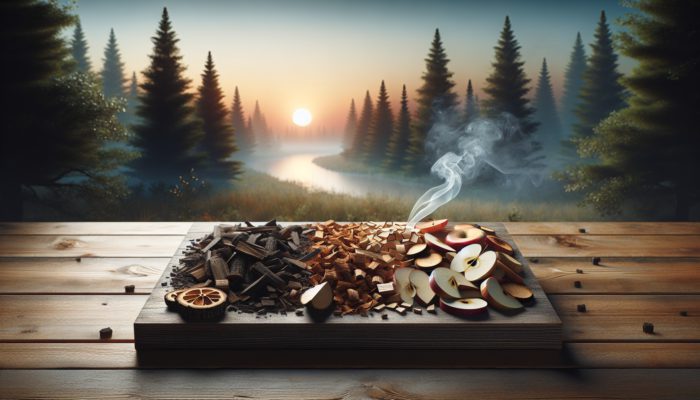Enhance Your Culinary Expertise with Essential Techniques for Cooking Quail
Discover How to Select the Freshest Quail for an Unforgettable Culinary Experience

Choosing the most fresh quail is crucial for creating dishes that are rich in flavour and satisfaction. When you visit a market, inspect each bird meticulously; they should have clear eyes and firm flesh. A high-quality quail feels dense for its size, indicating it has been nourished well and is of premium quality. To guarantee top freshness, always procure your quail from trustworthy sources like a local butcher or a nearby farmer’s market. Don’t hesitate to ask vendors about their sourcing methods to ensure you’re getting the best quality. Also, pay attention to the visual appeal; dull colours or off-putting odours strongly suggest that the quail is not fresh and should be avoided.
Moreover, consider the size of the quail; younger and smaller birds tend to offer a more tender texture combined with a milder flavour, while larger quails may provide a more robust taste. Familiarize yourself with the various quail breeds available in the U.S., such as Coturnix and Bobwhite, as each breed has its own unique flavour profiles and cooking traits. Understanding these distinctions can greatly enhance your smoking experience and elevate your final dish to new heights.
Transform Your Quail with Flavorful Brining Techniques
Brining your quail in a well-prepared brine solution can significantly enhance both moisture retention and flavour, resulting in succulent meat that is bursting with taste. To create a highly effective brine, mix water, salt, and sugar at a ratio of about 1 cup of salt and 1/2 cup of sugar for every gallon of water. You can elevate this basic brine by adding flavourful ingredients like crushed garlic, fresh herbs, or a selection of spices that will infuse the quail with unique and distinctive tastes. Ensure that the quail is fully submerged in the brine solution within a large container for maximum flavour absorption.
Let the quail soak in the brine for several hours; although a minimum of 4 hours is recommended, overnight brining can yield even more remarkable results. This process not only intensifies flavour but also tenderizes the meat, enhancing its appeal after smoking. After the brining time is up, rinse the quail thoroughly under cold water to remove excess salt and sugars, which helps prevent an overly salty taste in your finished dish.
Understanding the Importance of Drying Quail Before Smoking
Once your quail has been brined, the next essential step is to pat the birds dry, a critical part of the smoking process. This preparation allows the skin to crisp up beautifully during smoking, contributing to the delicate flavour we strive to achieve. Use paper towels to gently dab the quail, removing any residual surface moisture that may hinder the smoking process. This step cannot be overlooked; excess moisture can lead to steaming rather than smoking, which dulls both the flavour and texture of the quail.
While drying, it’s also a great time to check each bird for any remaining feathers or impurities. A clean and well-prepared quail not only tastes better but also looks more appealing when served. Additionally, if you wish, you can lightly season the quail at this stage to ensure your chosen rub or seasoning adheres well to the dry skin, enhancing the overall flavour profile.
Choosing the Right Wood for Exceptional Smoking Outcomes

Investigating Different Woods for Smoking Quail to Enhance Flavor
The type of wood you choose for smoking quail has a profound impact on the flavour profile of your finished dish. Each wood variety contributes distinct flavours; milder woods like apple and cherry are particularly advantageous due to their subtle sweetness, which beautifully complements the delicate taste of the meat. These woods allow the natural flavours of the quail to shine through without being overwhelmed by harsh smokiness.
Avoid using stronger woods like hickory or mesquite for smoking quail, as their intense flavours can overpower the bird’s nuanced taste. If you’re keen on experimenting, consider blending a small amount of a stronger wood with milder varieties, but be cautious to ensure the quail’s flavour remains the primary focus. For a well-rounded profile, fruit woods serve as excellent options since they provide versatility and enhance the overall taste while preserving a light and enjoyable experience.
Determining the Optimal Amount of Wood for Smoking Quail
The quantity of wood used during the smoking process can greatly affect the intensity of the smoke flavour in your quail. For optimal results, use only small amounts of wood to maintain the integrity of the meat’s delicate profile. Generally, using about 2-3 chunks of wood is sufficient for effective smoking, ensuring that the flavour remains subtle and enjoyable without eclipsing the natural characteristics of the quail.
It’s advisable to start with a lesser amount of wood, as you can always add more later if you prefer a stronger flavour. If you find the initial flavour too mild after your first smoking attempt, you can gradually increase the amount in subsequent sessions. Remember, the goal is to enhance the quail’s flavour delicately without overwhelming it; this delicate meat deserves a thoughtfully curated smoking experience.
Optimal Timing for Introducing Wood to the Smoker

Timing is vital when adding wood to your smoker for achieving the best smoking results. For optimal outcomes, introduce the wood right at the beginning of the smoking process. Once your smoker reaches the desired temperature, typically between 225-250°F, place your wood on the coals or in the smoker box, depending on your specific setup. This timing allows the wood to start smouldering immediately, releasing aromatic smoke that envelops the quail throughout the cooking process.
Ensure that your wood is adequately dry, as wet wood can generate steam instead of smoke. Keep a close eye on your smoker’s temperature during this phase, as fluctuations can affect both the smoking time and the flavour profile of your quail. Consistent heat maintenance is crucial for an even cook and optimal smoke absorption.
Setting Up Your Smoker for Successful Quail Smoking
Choosing the Right Smoker for Effective Quail Smoking
The type of smoker you select can significantly affect the final result when smoking quail. Electric, charcoal, and pellet smokers each bring unique advantages to the table. Electric smokers are particularly user-friendly, providing consistent temperatures, making them an excellent choice for beginners. They enable you to concentrate on various aspects of the smoking process without the constant need to manage the fire.
Conversely, charcoal smokers offer a traditional smoking experience, delivering a more robust flavour due to the natural combustion of the charcoal. While they require more attention to keep a steady temperature, many pitmasters prefer them for the depth of flavour they can achieve. Pellet smokers combine the convenience of electric smoking with the rich flavours of traditional wood smoking, using compressed wood pellets that offer versatility in flavour profiles.
When selecting your smoker, consider your experience level, the flavour profile you aim to achieve, and the time you can dedicate to monitoring the smoking process. Each type can yield delicious results if you effectively control the temperature.
Strategies for Maintaining the Perfect Temperature for Quail
Maintaining the correct temperature is essential for achieving that delicate flavour when smoking quail. The optimal smoking temperature for quail ranges between 225-250°F. This temperature range allows the quail to cook slowly while absorbing the wood smoke, ensuring that the meat remains tender and juicy throughout the process.
Utilizing a reliable thermometer is crucial for keeping track of the internal temperature of the smoker. A digital probe thermometer can assist you in closely monitoring the heat, enabling you to make necessary adjustments as needed. If your smoker exhibits temperature fluctuations, consider placing a water pan inside to help stabilize the heat and maintain moisture levels.
For the best outcomes, resist the temptation to raise the temperature to speed up the cooking process. Slow and steady cooking is vital for unlocking the full flavour potential of your quail, ultimately leading to an exquisite dish that showcases the bird’s natural charm.
How Long Should You Smoke Quail for the Best Results?
Smoking quail typically requires around 1-2 hours at the recommended temperature range of 225-250°F. However, the exact duration may vary based on the size of the quail and the specific smoker you are using. The most reliable way to determine doneness is to use a meat thermometer, targeting an internal temperature of 165°F.
Begin checking the internal temperature after approximately one hour of smoking. This step is critical; overcooking can result in tough, dry meat, while undercooking poses food safety risks. Maintain vigilant oversight of the smoker’s temperature throughout the cooking process, as even slight fluctuations can significantly affect cooking times.
Once the quail reaches the desired internal temperature, carefully remove it from the smoker and allow it to rest. This resting period is essential as it facilitates the redistribution of juices, resulting in a juicy and flavourful quail that is sure to impress your guests.
Expert Techniques for Smoking Quail to Achieve Remarkable Flavour
Techniques Employed by Seasoned Smokers
Experts in smoking quail often utilize a blend of brining and thoughtful wood selections to achieve the ideal flavour profile. Brining is a critical step that enhances moisture retention and infuses rich flavours deep into the meat. Many professionals recommend employing a brine infused with herbs and spices tailored to the desired flavour profile of the dish.
In terms of wood selection, experts typically prefer mild fruitwoods like apple or cherry, as these provide a gentle sweetness that complements quail remarkably well. Additionally, they highlight the importance of maintaining consistent temperatures throughout the smoking process, which can be monitored by regularly checking the smoker’s heat and making necessary adjustments.
A practical example of expert technique involves keeping meticulous records throughout the smoking process. Many seasoned smokers log essential details such as temperature, time, wood type, and even weather conditions to refine their techniques over time. This practice aids them in replicating successful smoking sessions and serves as a valuable learning tool for future attempts.
Effective Monitoring Techniques for the Smoking Process
Monitoring the smoking process is vital for achieving the best results when smoking quail. Experts recommend utilizing high-quality thermometers, such as meat probes, which can remain in the quail throughout the cooking process. This method allows for continuous monitoring of the internal temperature without the need to open the smoker and risk losing heat.
Moreover, regularly logging the smoker’s temperature aids in making necessary heat adjustments. Experts often maintain detailed logs of the smoking conditions, noting variations or adjustments throughout the process. This information is invaluable for perfecting future smoking sessions.
Regularly checking on the quail is equally important. Look for visual cues; the skin should appear slightly crispy and browned, indicating that the smoke is penetrating effectively. This careful attention to detail ensures that the quail achieves the ideal flavour and texture, culminating in a dish that delights the palate.
Avoiding Common Mistakes When Smoking Quail
One common mistake when smoking quail is over-smoking, which can overpower the bird’s delicate flavour. Experts advise against using excessive wood or smoking at too high a temperature, as this can lead to a bitter taste that masks the quail’s natural qualities.
Another frequent error is neglecting the brining process. Skipping this essential step can result in dry, lackluster meat that fails to showcase the full potential of the quail. Proper brining ensures moisture retention and flavour enhancement, making it a crucial component of preparation.
Additionally, many novice smokers underestimate the importance of closely monitoring cooking times and temperatures. Allowing the quail to smoke without regular checks can lead to overcooking or undercooking, both of which detract from the quality of the dish. Paying careful attention to these factors can help avoid common pitfalls and elevate your quail smoking techniques.
Enhancing Quail’s Flavour with Seasonings and Rubs
Fundamental Seasoning Options to Elevate Quail’s Natural Taste
When it comes to seasoning quail, a minimalist approach often yields the most satisfying results. Basic seasonings such as salt, pepper, and fresh herbs can enhance the bird’s inherent flavours without overshadowing them. Experimenting with subtle herbs like rosemary or thyme can add aromatic depth that beautifully complements the smoky profile.
Timing is also a critical factor when applying your seasonings. While some prefer to add seasonings post-brining, others find that incorporating herbs and spices before the brining process allows for deeper flavour penetration into the meat. This method can create a more pronounced flavour profile that remains well-balanced.
For a simple yet effective seasoning blend, consider mixing equal parts of salt and pepper, then adding a teaspoon of your chosen herbs. Rub this mixture evenly over the quail, ensuring an even distribution that enhances every bite. The goal is to elevate the quail’s natural flavours while allowing the smoking process to contribute its unique essence.
Most Effective Rubs for Quail to Amplify Flavour
Rubs are an excellent method to infuse additional flavours into your smoked quail. Mild flavours work best to enhance the bird’s taste without overwhelming it. A rub featuring a blend of paprika, garlic powder, and a hint of brown sugar can add depth while preserving the delicate taste of the quail.
For a balanced rub, consider using the following ingredients:
- 1 tablespoon paprika
- 1 tablespoon garlic powder
- 1 tablespoon onion powder
- 1 teaspoon brown sugar
- 1 teaspoon black pepper
- 1 teaspoon salt
- 1 teaspoon dried thyme
- 1 teaspoon ground mustard
Mix these ingredients thoroughly and store them in an airtight container until you are ready to use them.
The application of rubs is an art form. Be sure to massage the rub gently into the quail’s skin, allowing the flavours to adhere and penetrate the meat. This technique is essential for creating layers of taste that will be highlighted during the smoking process.
Applying Rubs and Seasonings to Quail for Maximum Flavour
Evenly applying rubs and seasonings over the quail is vital for achieving a balanced flavour profile. Begin by ensuring the quail is dry after the brining process. Take your chosen rub and generously sprinkle it over the entire surface of the quail, coating all sides, including inside the cavity.
Gently massage the rub into the skin, working it into any crevices or folds. This step not only enhances flavour but also creates a beautiful crust as the quail cooks, adding to the dish’s overall aesthetic appeal. It’s important to let the quail rest for at least 30 minutes after seasoning, allowing the flavours to meld and fully infuse into the meat.
When applying rubs, consider your personal taste preferences. If you enjoy a spicier kick, feel free to add a pinch of cayenne or chili powder to the mix. Conversely, for a more aromatic experience, additional herbs like oregano or basil can be included. The objective is to create a harmonious blend that complements the quail’s natural flavours and enhances the smoking experience.
Advanced Smoking Techniques for Perfecting Your Quail
Direct vs. Indirect Smoking: Identifying the Best Method for Quail
When it comes to smoking quail, the technique you opt for can greatly influence the outcome. Indirect smoking is preferred for quail, as it prevents the delicate meat from burning. In this method, the quail is placed away from the direct heat source within the smoker. This approach allows for a slower, more even cooking process, which is crucial for maintaining the bird’s tenderness and ensuring even smoke penetration.
By utilizing indirect placement, you reduce the risk of charring the exterior while the interior remains undercooked. This technique is particularly advantageous for smaller birds like quail, which can easily dry out if subjected to high heat for prolonged periods.
Employing this method not only enhances flavour but also creates a more enjoyable eating experience. The result is a beautifully smoked quail with a crispy exterior and a juicy interior that your guests will absolutely adore.
Impact of Your Smoking Method on Flavour and Texture
The smoking method you select can significantly influence the final flavour of the quail. Indirect smoking permits a gradual infusion of smoke, leading to a more delicate taste profile that highlights the bird’s natural qualities. This slow cooking process allows the meat to absorb the aromatic qualities of the wood, enriching the overall flavour without overwhelming it.
Conversely, direct smoking can yield a harsher, more pronounced smoke flavour, which is less suitable for delicate meats like quail. The intense heat can also dry out the meat, detracting from its inherent qualities.
Experimenting with different smoking methods can produce varying results, so finding the right balance is essential. For quail, the indirect method is widely regarded as the optimal approach for achieving finely tuned flavour and texture.
Utilizing a Water Pan to Maintain Moisture While Smoking Quail
Incorporating a water pan into your smoker setup can significantly enhance the moisture levels of your smoked quail. By placing a water pan inside the smoker, you can help maintain humidity, which keeps the quail moist during the cooking process. This is especially beneficial for smaller birds like quail, which are prone to drying out during smoking.
Fill the water pan with water or a flavourful liquid such as apple juice to enrich the aromatic experience. The steam generated from the water pan helps regulate the smoker’s temperature while adding moisture to the air, creating a more forgiving smoking environment.
Be sure to monitor the water level throughout the smoking process, as it will evaporate over time. Keeping the pan filled ensures that the quail remains juicy and flavourful, ultimately enhancing the overall dining experience. Using a water pan is a minor adjustment that can result in significant improvements in the final dish.
The Importance of Resting and Presenting Your Smoked Quail
Understanding Why Resting Your Quail is Essential
Resting the quail after smoking is a vital step that is frequently overlooked. Once the quail has reached the desired internal temperature and is removed from the smoker, allow it to rest for approximately 10 minutes. This waiting period facilitates the redistribution of juices throughout the meat, resulting in a more succulent and flavourful experience when served.
If you skip this critical step, you risk losing valuable juices that can escape as soon as the quail is sliced. A well-rested bird retains more moisture, providing a tender bite that highlights the care taken throughout the smoking process.
During this resting time, consider preparing your side dishes or garnishing your plate. This preparation allows for a seamless transition from the smoker to the table, ensuring that your guests experience the best presentation of your smoked quail.
Elegant Carving Techniques for Smoked Quail Presentation
Carving smoked quail can be somewhat challenging due to its small size, but with a sharp knife and a steady hand, it can be executed beautifully. Begin by positioning the quail breast-side up. Use a sharp knife to separate the legs from the body, cutting through the joint where the leg meets the carcass.
Once the legs are removed, proceed to the wings, making similar cuts along the joint. For the breast meat, carefully slice along the breastbone, working in a downward motion to neatly remove the flesh from either side. Aim for thin, even slices to enhance presentation and ease of eating.
Consider plating the quail artfully, perhaps by fanning the slices on a platter or arranging the legs and wings in an appealing manner. This attention to detail can elevate your dish, making it suitable for special occasions or casual gatherings alike.
Choosing the Best Accompaniments for Smoked Quail
Pairing smoked quail with the right accompaniments can significantly enhance the overall meal experience. Light side dishes such as fresh salads or roasted vegetables are excellent choices that complement the rich, smoky flavour without overwhelming the palate. A citrus-based sauce, such as a lemon or orange glaze, can also provide a refreshing contrast to the quail’s inherent richness.
Consider the following options for a well-rounded meal:
- Mixed greens salad with vinaigrette
- Roasted seasonal vegetables
- Garlic mashed potatoes
- Wild rice pilaf
- Citrus salad with arugula
- Grilled asparagus with balsamic reduction
- Quinoa salad with fresh herbs
- Coleslaw with a light dressing
These accompaniments not only pair beautifully with smoked quail but also enhance its flavour, creating a balanced and delightful dining experience for your guests.
Proper Storage and Reheating Techniques for Smoked Quail
Understanding Safe Storage Duration for Smoked Quail
Properly storing smoked quail is essential to maintain its quality and flavour. Once cooled, smoked quail can be kept in the refrigerator for up to 3 days. Ensure to place it in an airtight container to prevent moisture loss and flavour degradation.
If you plan to store the quail for more than three days, consider freezing it. When properly stored in freezer-safe bags or vacuum-sealed containers, smoked quail can last for up to 3 months. Be sure to label your bags with the date to help you keep track of freshness.
When storing, avoid placing hot quail directly into the fridge, as this can raise the temperature of your refrigerator and compromise food safety. Allow the quail to cool to room temperature before refrigerating or freezing.
Best Practices for Reheating Smoked Quail While Preserving Quality
Reheating smoked quail requires a delicate approach to maintain its unique flavour and texture. The best method for reheating is in the oven at a low temperature, around 250°F. This approach allows the quail to warm evenly without drying out.
Before reheating, consider covering the quail with foil to retain moisture during the process. Heat the quail for approximately 15-20 minutes, checking frequently to ensure it does not overcook. This method helps maintain the quail’s tenderness and juiciness, allowing you to enjoy it as if it were freshly smoked.
If you find that the quail has dried out slightly during storage, consider serving it with a light sauce or broth to add moisture back into the meat, enhancing the overall experience.
Freezing Smoked Quail for Future Enjoyment Without Compromising Quality
Freezing smoked quail is a convenient option for enjoying this delicacy at a later date. To freeze quail, place it in vacuum-sealed bags or wrap it tightly in plastic wrap followed by aluminium foil for added protection. This method helps prevent freezer burn and preserves the quail’s flavour for future enjoyment.
When you’re ready to use it, thaw the quail overnight in the refrigerator. Never refreeze thawed quail, as this can negatively impact its texture and flavour. Once thawed, reheat the quail using the methods previously discussed to restore its original qualities.
Freezing smoked quail is an excellent way to extend its shelf life while still providing you with a delicious meal option on busy days.
Microwave Reheating Techniques for Smoked Quail to Maintain Quality
Reheating smoked quail in a microwave is a quick option, but it requires careful attention to avoid overcooking. Start by placing the quail in a microwave-safe dish and covering it with a damp paper towel. This helps retain moisture and prevents the quail from drying out during the reheating process.
Set your microwave to medium power and heat the quail in short intervals, approximately 30 seconds at a time. Check the temperature frequently to ensure it warms evenly. If the quail is not adequately heated, continue microwaving in small increments until it reaches a warm internal temperature.
While the microwave can be a convenient reheating option, it may not yield the same quality result as oven reheating. Use this method as a last resort when time is of the essence, and be mindful of keeping the quail moist throughout the process.
Innovative Flavour Experiments with Smoked Quail
Infusing Unique Flavours with Herbs and Spices in Your Brine
Experimenting with various herbs and spices in your brine can lead to unique flavour profiles that elevate your smoked quail to new culinary heights. Consider incorporating aromatic ingredients like dill, coriander, or even a hint of cinnamon into your brine mixture. These additions can create an intriguing contrast to the natural sweetness of the quail.
When crafting your brine, remember to balance the flavours. Overdoing a potent herb can easily overpower the quail, while a subtle infusion can enhance its natural characteristics. For a basic herb brine, consider mixing the following:
- 1 cup salt
- 1/2 cup sugar
- 1 gallon water
- 1 tablespoon dill seeds
- 1 tablespoon coriander seeds
- 1 teaspoon ground cinnamon
Allow the quail to soak in this mixture for several hours or overnight, depending on the desired intensity of flavour. The outcome is a beautifully flavoured quail that offers a delightful twist on traditional smoking techniques.
Utilizing Diverse Woods to Create Unique Flavour Profiles
Incorporating various types of wood can generate complex flavour profiles for your smoked quail. Mixing fruitwoods like apple and cherry can provide a balanced sweet and fruity taste that pairs beautifully with the quail’s delicate flavour. This combination enhances the overall experience, producing a depth of flavour that keeps each bite interesting and satisfying.
When experimenting with wood combinations, start with small amounts of each type and adjust according to your taste preferences. A good starting ratio is a 50/50 blend, but feel free to modify based on your previous experiences.
Additionally, consider the smoking time and temperature, as these factors will influence how the flavours meld together. Experimentation is key; keep detailed notes on your wood combinations, cooking times, and results to refine your technique and achieve the perfect flavour blend.
Creative Serving Ideas for Smoked Quail
Serving smoked quail in innovative ways can transform a simple dish into a gourmet experience. Here are some unique serving ideas to consider:
- Incorporate quail into a fresh salad with mixed greens and a citrus dressing for a refreshing meal.
- Serve on a charcuterie board alongside an assortment of cheeses, fruits, and artisan breads.
- Create a gourmet sandwich using artisan bread and fresh toppings like arugula and aioli.
- Present quail as a stunning centerpiece for a rustic dinner party, garnished with fresh herbs.
- Use smoked quail in tacos or wraps, adding colourful garnishes for a vibrant presentation.
- Pair with seasonal fruits such as figs or peaches for a sweet contrast to the smoky flavour.
- Offer quail as part of a tasting menu, showcasing different wood flavours with each dish.
- Create a hearty quail hash with potatoes and vegetables for a delightful brunch option.
These creative serving ideas not only elevate the dish but also provide an opportunity to impress your guests with unique flavour pairings and artistic presentations.
Exploring Marinades and Rubs for Enhanced Flavour in Smoked Quail
Delving into different marinades and dry rubs can further amplify the flavour of quail before smoking. Consider using citrus-based marinades, which can add brightness and acidity, perfectly balancing the richness of the smoked meat. A simple marinade made from olive oil, lemon juice, and garlic can work wonders, tenderizing the quail while infusing it with flavour.
For those seeking a spicier kick, consider crafting a marinade with chili paste, lime juice, and fresh herbs. Marinate the quail for several hours or overnight to allow the flavours to deeply penetrate the meat. For dry rubs, experiment with spices such as cumin, coriander, and smoked paprika to create a bold and flavourful crust.
Ultimately, the key to successful marinades and rubs lies in balancing flavours to enhance the quail’s natural sweetness without overpowering it. Keep experimenting to discover the combinations that best align with your taste preferences.
Infusing Smoke with Aromatics for Unique Flavour Experiences
Introducing smoke infused with aromatic ingredients can elevate your smoked quail to new culinary heights. Consider incorporating elements like citrus peels, fresh herbs, or even tea leaves in the smoker to create unique flavour profiles. For instance, adding lemon or orange peels to the wood can impart subtle citrus notes that brighten the smoky flavour.
Herbs such as rosemary or thyme can also be utilized to enhance the smoke. Place fresh sprigs directly onto the wood before smoking, allowing their oils to release and mingle with the smoke. This technique adds an extra layer of flavour that perfectly complements the quail.
Experiment with different combinations to discover your favourite aromatic infusions. However, exercise caution, as some ingredients may release stronger flavours that could overpower the delicate nature of the quail. Achieving a careful balance will lead to a memorable and delicious final dish.
Frequently Asked Questions About Smoking Quail: Your Concerns Addressed
Can I smoke frozen quail for convenience?
Yes, you can smoke frozen quail, but it’s advisable to thaw it in the refrigerator first for even cooking results.
What internal temperature should quail reach for safe consumption?
Quail should achieve an internal temperature of 165°F for safe consumption.
Can I use a gas grill for effectively smoking quail?
Yes, you can use a gas grill to smoke quail by utilizing a smoker box or wrapping wood chips in foil.
How long should I brine quail for optimal flavour results?
Brining quail for a minimum of 4 hours is recommended, but overnight brining will yield even better outcomes.
Is it better to smoke quail with the skin on or off for moisture retention?
It is advisable to smoke quail with the skin on, as it helps retain moisture and adds flavour during the cooking process.
What sides pair excellently with smoked quail for a complete meal?
Light side dishes such as salads, roasted vegetables, and citrus-based sauces complement smoked quail beautifully.
Can I over-smoke quail and affect its flavour?
Yes, over-smoking can lead to a bitter flavour, so it’s crucial to monitor wood usage and smoking time carefully.
How do I know when my smoked quail is done cooking safely?
Use a meat thermometer to check for an internal temperature of 165°F to ensure that it is fully cooked.
Can I reheat smoked quail in a microwave for convenience?
Yes, reheating smoked quail in a microwave is possible; use medium power and cover it with a damp paper towel to retain moisture.
What types of wood are best suited for smoking quail?
Mild fruitwoods like apple and cherry are ideal for smoking quail due to their gentle sweetness that complements the meat.
Connect with us on Facebook for more tips and tricks!
The Article How to Smoke Quail for Delicate Flavour: A Guide appeared first on https://pitmastersarsenal.com
The Article Smoke Quail for Delicate Flavour: A Step-by-Step Guide Was Found On https://limitsofstrategy.com
The Article Smoke Quail: A Step-by-Step Guide to Delicate Flavour First Appeared ON
: https://ad4sc.com










No responses yet